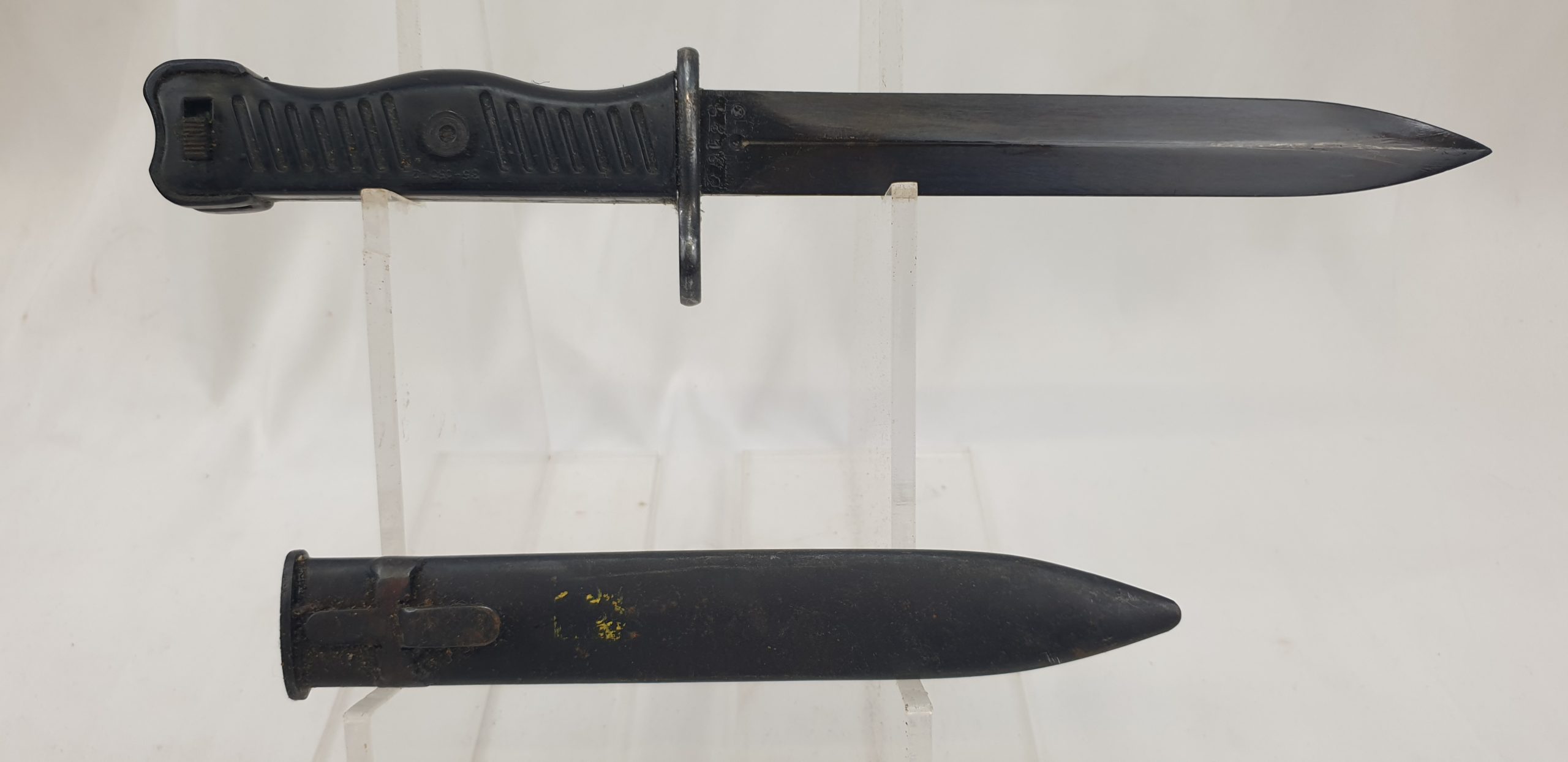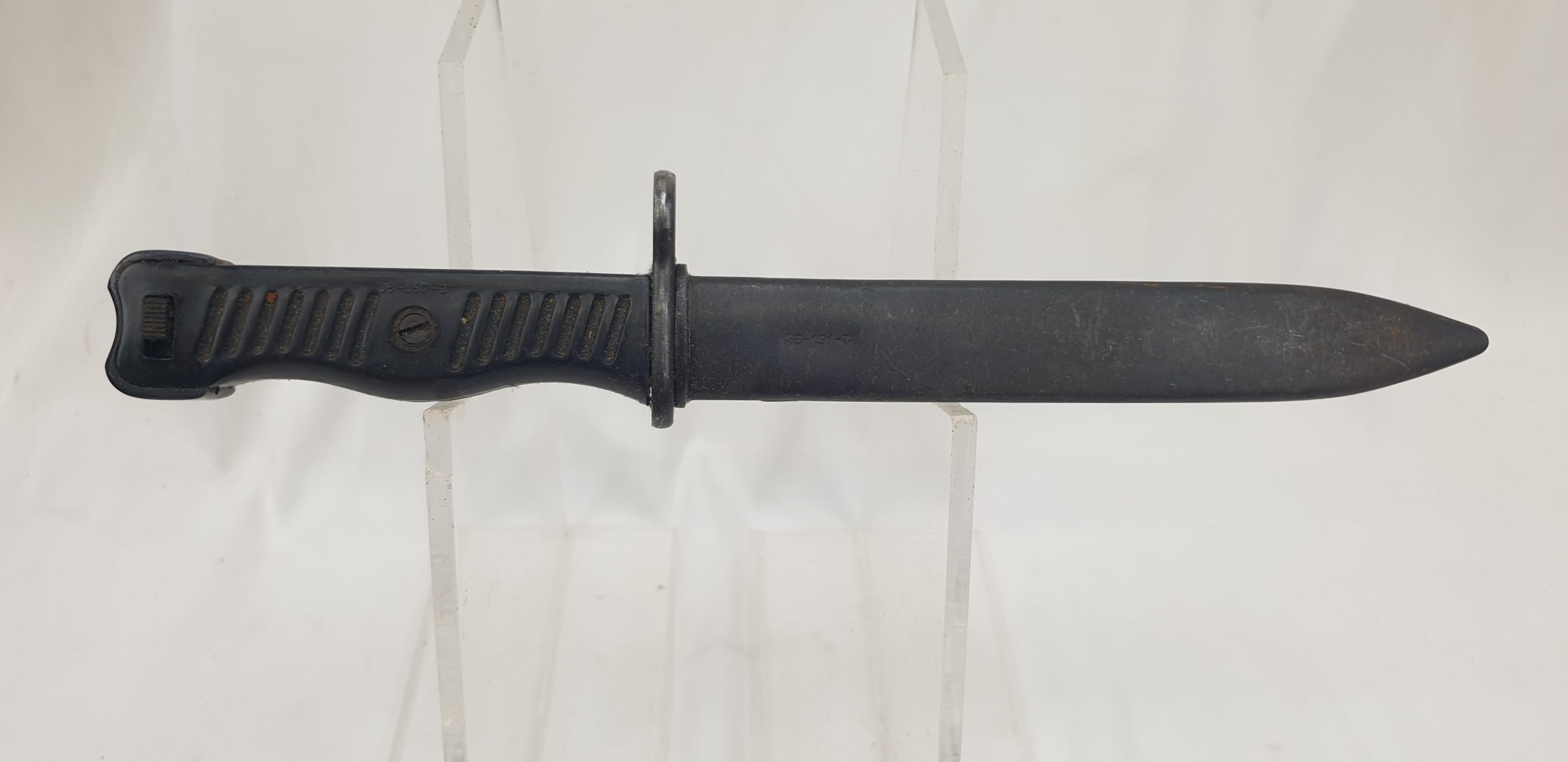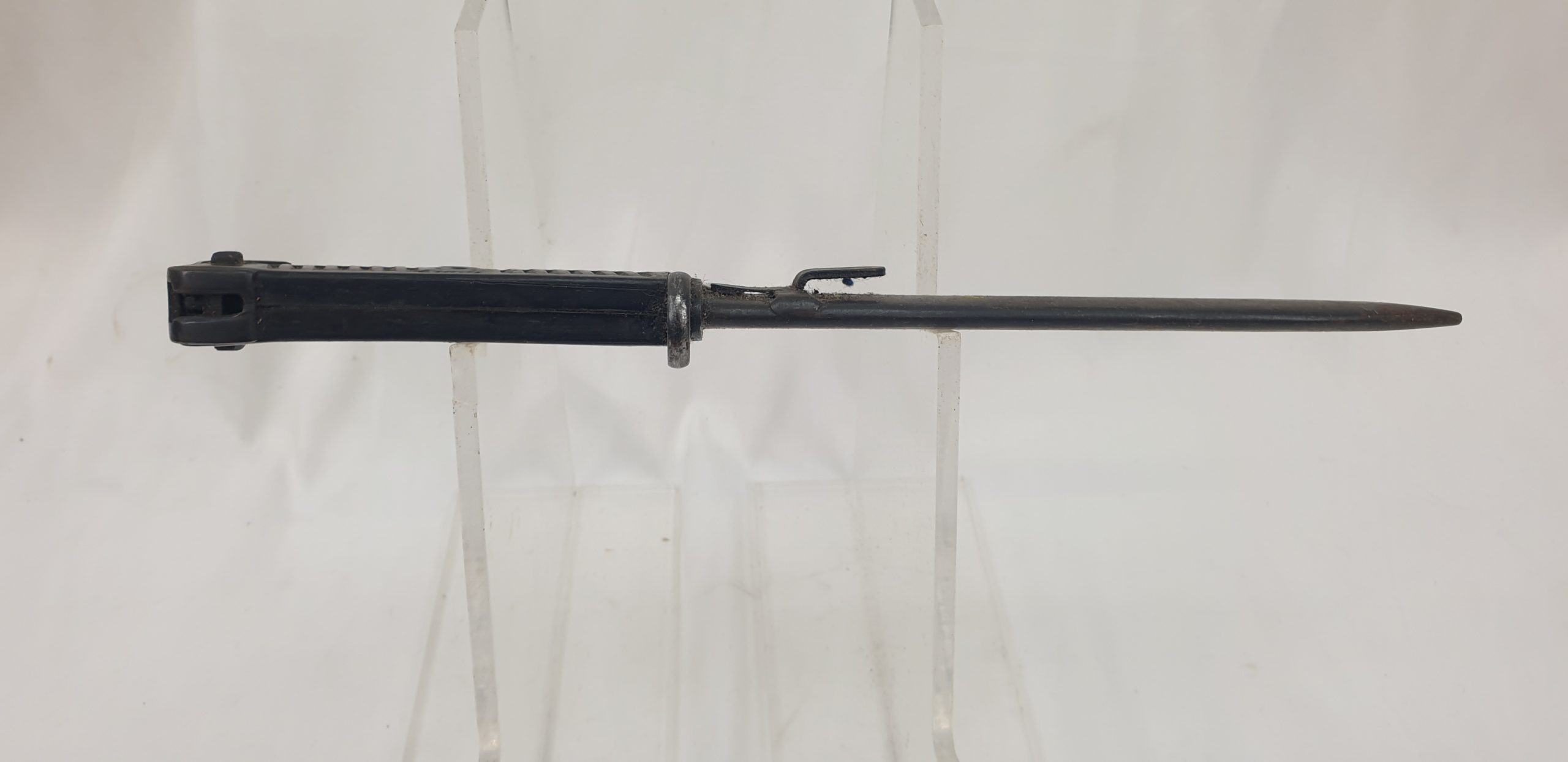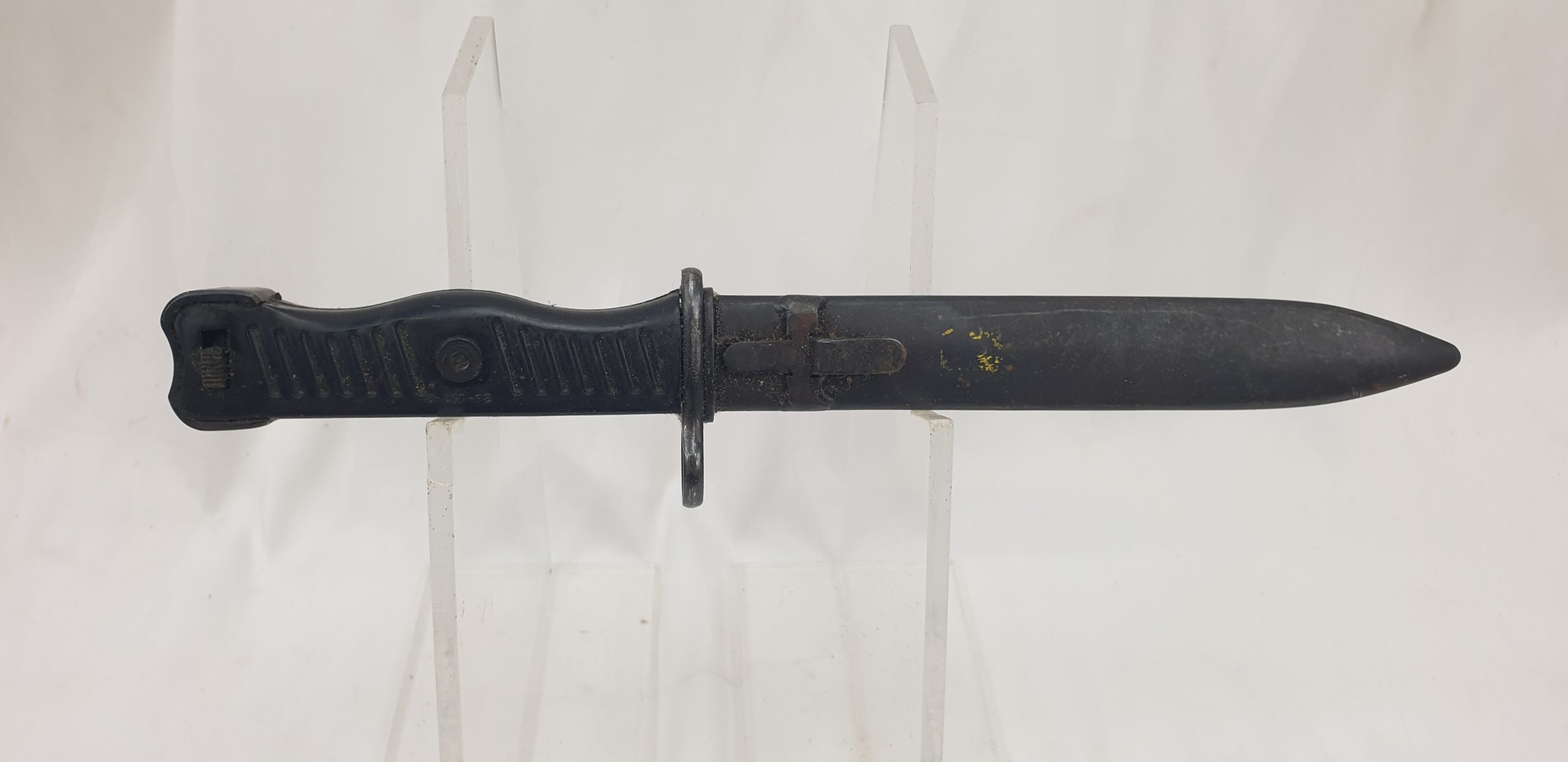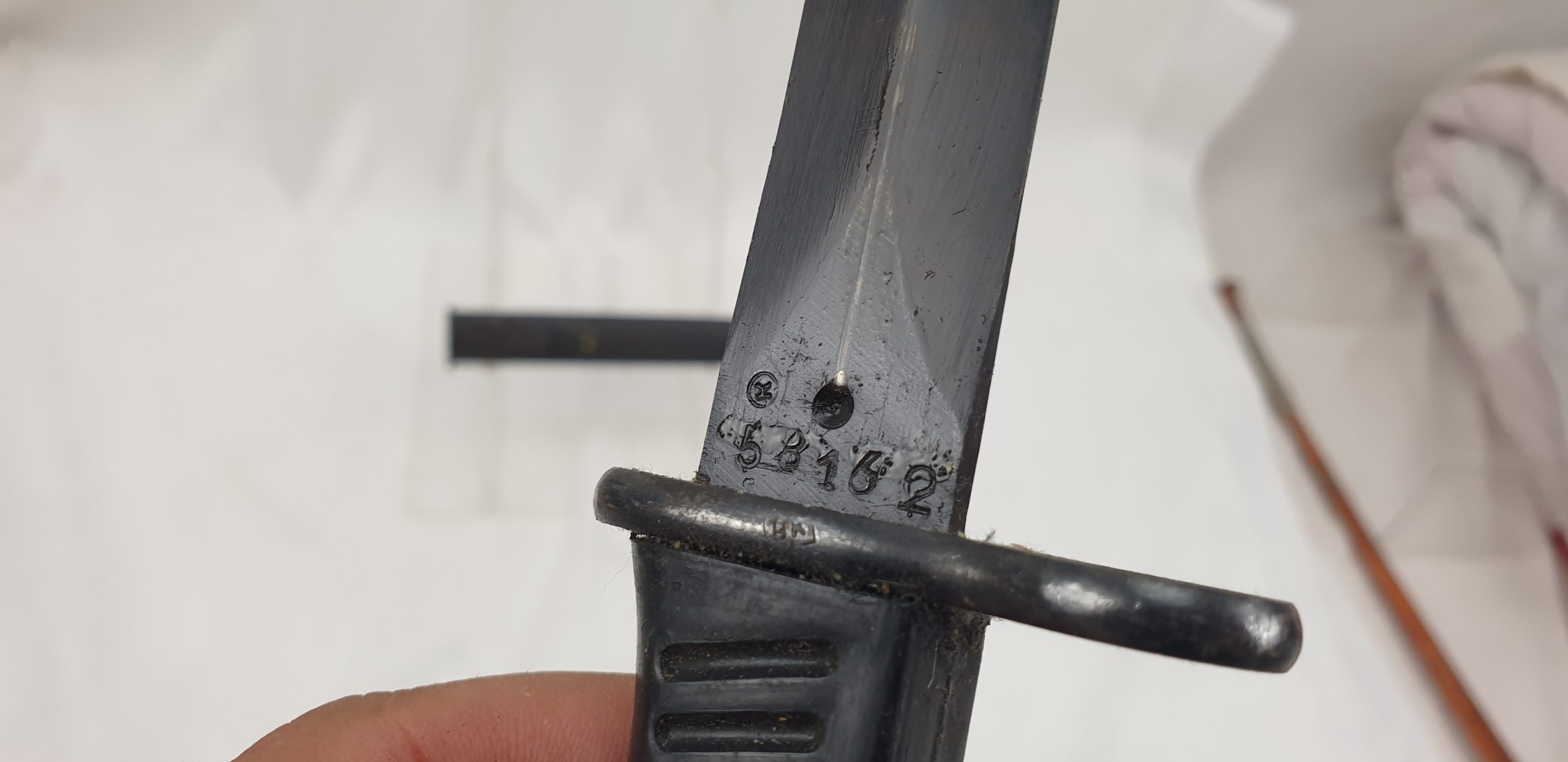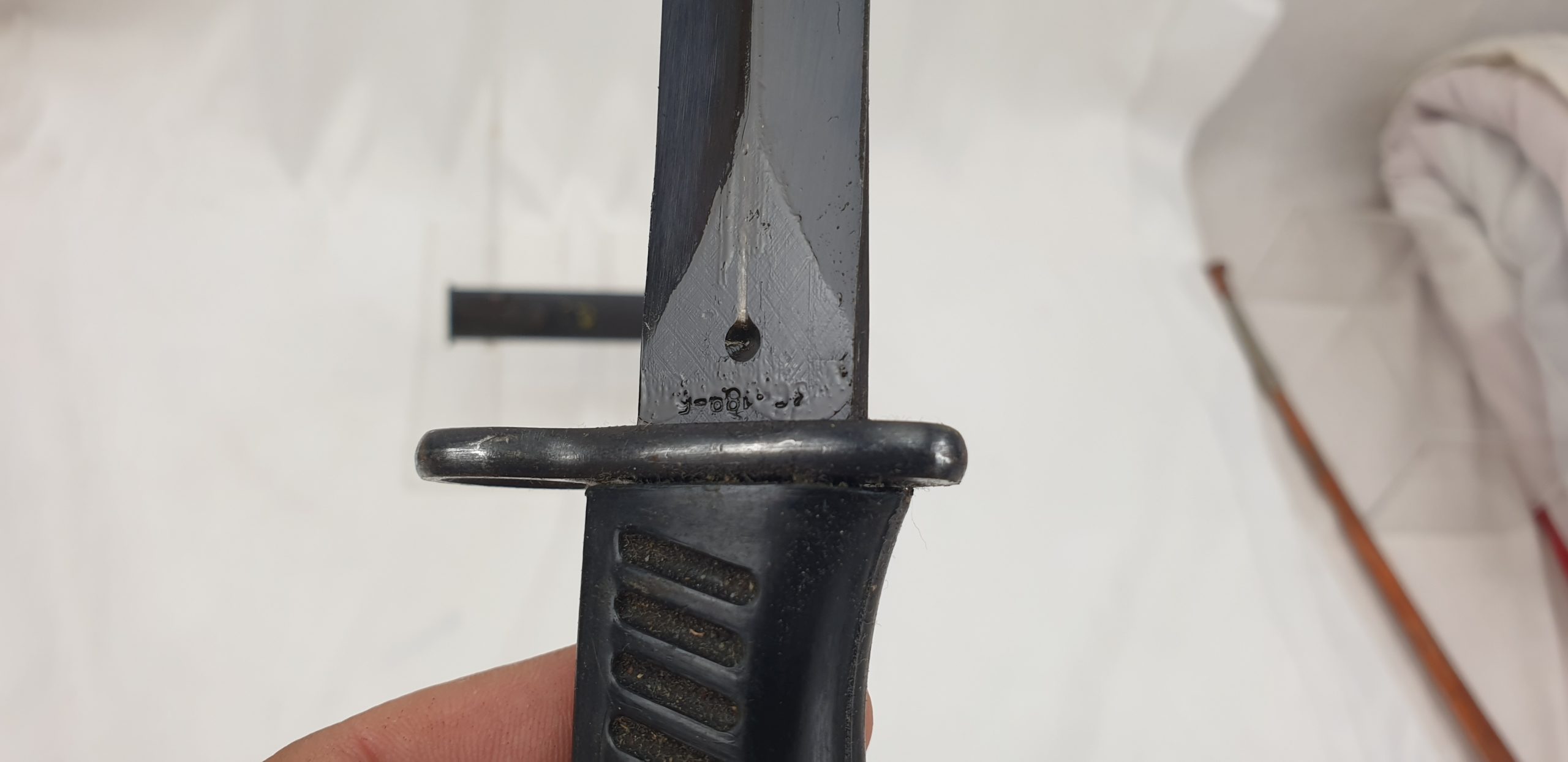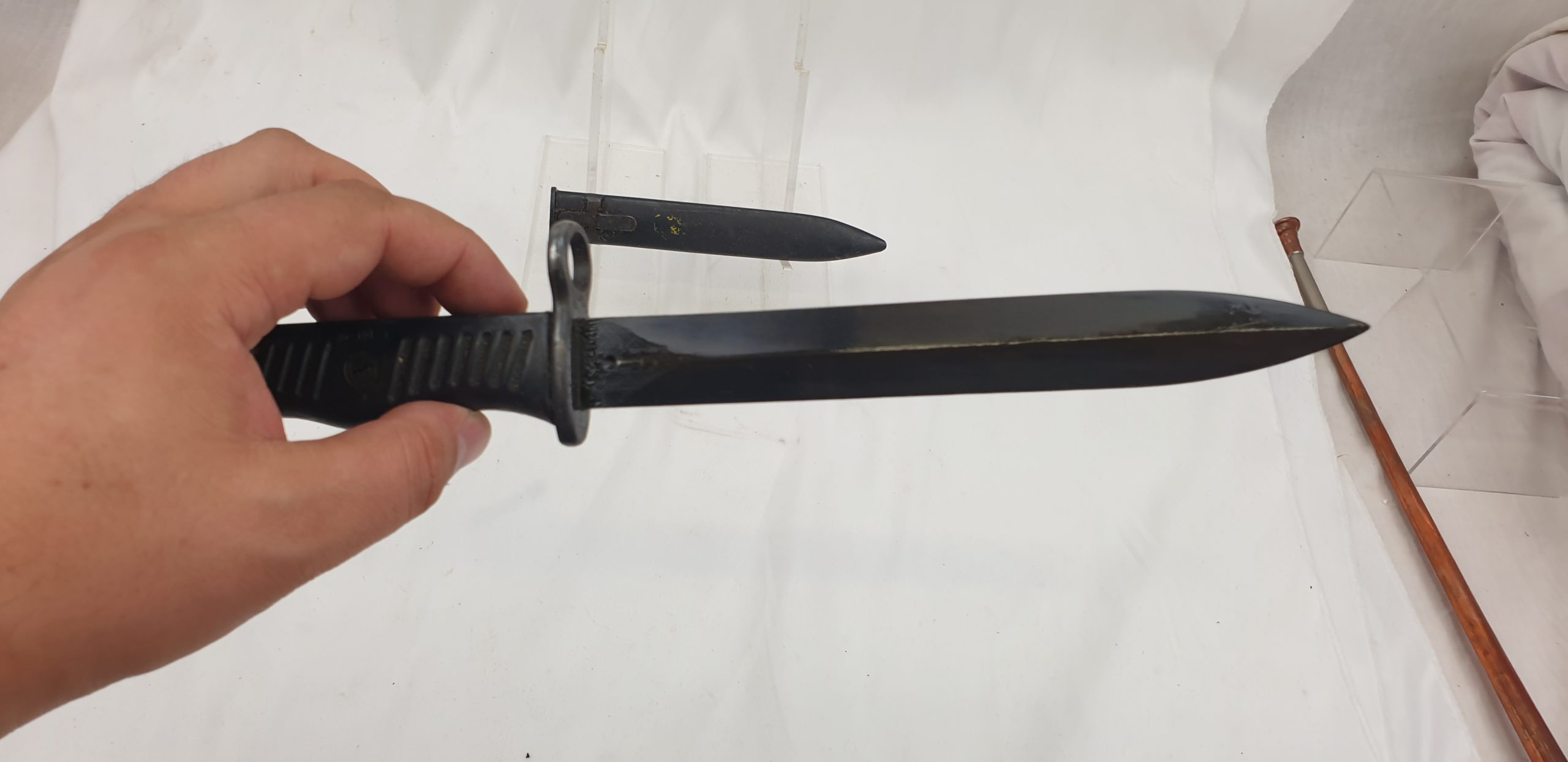~ Yugoslav M56 Sub-Machine Gun Bayonet ~
The Yugoslav M56 Sub-Machine Gun, also known as the M56 or Zastava M56, was a compact, select-fire submachine gun developed and produced in Yugoslavia during the Cold War era. It was designed for use by Yugoslav armed forces and law enforcement agencies. Like many military firearms, the M56 had an accompanying bayonet for use in close combat and as a multipurpose tool.
Our example is serial numbered 58162
Bayonet Design and Features:
Design: The bayonet used with the Yugoslav M56 Sub-Machine Gun was a simple, knife-style bayonet with a blade designed for both combat and utility purposes.
Attachment Mechanism:
The bayonet attached to the M56 by slipping over the barrel of the submachine gun and locking into place. It typically featured a lug or ring near the hilt of the blade that secured it to the bayonet lug on the M56’s barrel.
Blade Length:
The blade of the M56 bayonet was relatively short, usually around 6 to 7 inches (15 to 18 centimeters) in length.
Utility Functions:
In addition to its primary role as a combat tool, the bayonet could also be used for various utility purposes, such as cutting wire, opening cans, and performing general field tasks.
Historical Context:
The Yugoslav M56 Sub-Machine Gun and its associated bayonet were developed in the 1950s, and they served as standard equipment for the Yugoslav People’s Army and law enforcement agencies for several decades.
The M56 submachine gun itself was a simple and reliable weapon that saw use not only in Yugoslavia but also in various conflicts and wars in the region. It was chambered in 7.62x25mm Tokarev ammunition and was capable of both semi-automatic and fully automatic fire.
The bayonet was an essential accessory for soldiers and law enforcement personnel, providing them with a tool for close combat and various field tasks. It also served as a symbol of the M56’s military heritage.
As Yugoslavia dissolved in the 1990s and the region underwent significant political and military changes, the M56 and its associated bayonet became less common in active service. However, they remain part of the historical legacy of Yugoslav military firearms and equipment. Collectors and enthusiasts often seek out such items as historical artifacts of the Cold War era and the Yugoslav military.

